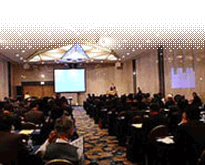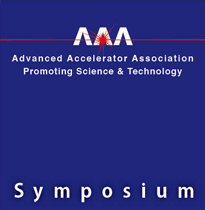
Introducing the Advanced Accelerator Association Promoting Science & Technology (AAA)
The Advanced Accelerator Association Promoting Science & Technology (AAA) has been established to strive for the further advancement of scientific technologies and remarkable scientific discoveries derived from the latest developments on colliding electron-positron accelerators. The Association aims to broaden human intellectual horizon in the fields of space, elementary particles, matter and life science, and to comply with global-level assignments on medical, energy and environment issues by facilitating industry-government-academia collaboration and seeking various industrial applications of advanced accelerators and technologies derived from R&D on advanced accelerators. The Association promotes the following activities:
☆ Through a variety of events (such as symposiums and lectures) and media exposures (such as internet), outreach worldwide about all the possibilities and significant purposes advanced accelerator technologies have to offer,
☆ Organize group activities with outside intellectuals to discuss appropriate uses of intellectual properties and R&D directionalities for the designated model project, the International Linear Collider (ILC), to make propositions and suggestions to associating organizations, and
☆ Gather "Monodzukuri (manufacturing) technologies" in a variety of industrial fields from Industry-Government-Academia collaboration to create innovative scientific technologies to support advanced accelerators.

The advanced accelerator science will give us a new cosmic doorway to make discoveries on nature laws and to provide answers to fundamental questions of all time by researching the origins of mass for all elementary particles called Higgs boson, unknown substance which composes 23% of the total mass of the Universe, dark matter, and extra dimensions of space and time beyond four dimensions we are living in. At the same time we strongly believe that working towards building the ILC would generate motivations towards science and technology among younger generations, providing hopes and dreams for their future.
The ILC will be an extremely precise system stretching approximately 40km in length inside a linear tunnel deep underground. The collider hurls electrons and their anti-particles, positrons, into a series of vacuumed superconducting accelerator cavities that are surrounded by very precise devices, and then accelerates them to nearly the speed of light toward the detectors, colliding particles face to face at the center of the machine. Recreating the initial state of the Universe (immediately after the Big Bang) with the collider and studying the byproducts, elementary particles, will allow us to unlock some of the deepest mysteries of the Universe.
Advanced accelerators will enrich our society with innovative science technologies. Superconducting accelerator technology developed under the ILC project would dramatically increase efficiency of synchrotron radiation facilities and neutron facilities, providing new solutions for global-level assignments on medical, energy and environment issues.
■ Meaning of the organization logo
The first three initial letters of the Organization, AAA (Advanced Accelerator Association Promoting Science & Technology), have been chosen as the Organization's logotype. The logo design features emitted electron and positron beams accelerating at the speed of light and colliding face to face in the middle of an accelerator. Borders are used to express an accelerator for the logo design, and for symposiums and lectures the color navy is used in backgrounds to create images of the Universe.

■ The AAA organization logo and this web site are both designed by Dr. Tomio Arima, Professor,
Tokyo Kasei University, Faculty of Home Economics Department of Art & Design.


